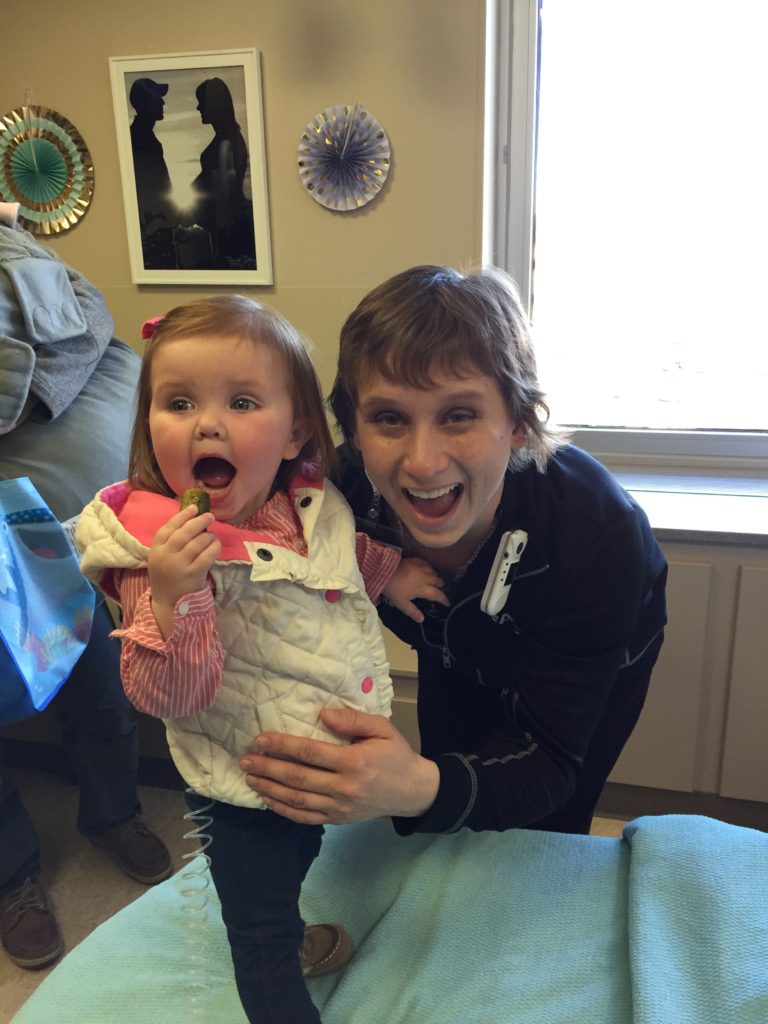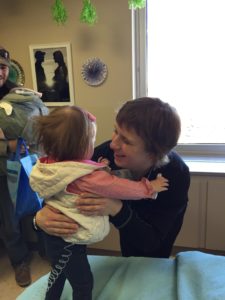
Who?
My name is Melissa Swenson and I am a Certified Child Life Specialist (CCLS).
What?
The definition of a Child Life Specialist is a pediatric health care professional who works with infants, children, youth, and families in hospitals, emergency rooms, clinics and other settings to help them cope with the challenges and uncertainty of hospitalization, illness, injury, and treatment. They provide children with evidence-based, developmentally-appropriate interactions including; preparations for medical procedures, pain management, emotional support and coping strategies, and play to reduce fear, anxiety, and pain. Child Life specialists may serve infants through 18-year- old patients.
When, Where, and Why?
Healthcare environments can be a confusing and frightening experience for a child. Children are given age appropriate information about their procedures and illness using words they understand. Child Life Specialists accompany children to procedures and provide distraction and support. In addition to helping children understand their chronic condition, test, or procedure; Child Life Specialists plan special events to reinforce normalcy including holiday celebrations and special visitors along with providing developmentally appropriate toys and activities for hospitalized patients. CCLS’s are advocates for family-centered care while working with everyone who is part of your child’s care team.
“I am a one-person child life program. I work with children in a variety of settings including children who are admitted to the hospital, provide surgery tours, work with patients in clinic and radiology settings, and work with children whose loved one has a new diagnosis or is at end of life.”
Child Life and MMIHS
I had the honor of working with a young patient with MMIHS. She received Child Life support and distraction for her weekly central line dressing changes. I received a message from the child’s pediatrician stating she was fearful of coming to the clinic and she was looking for support and ideas to help make the procedure go more smoothly for the nurse, child, and family. With the use of an amazing creation by her mother she could lay on a blanket from home and have a barrier between her and the procedure not only to help keep the area sterile, but to also help so she could not see what was happening. I used a combination of light up wands, rain sticks, light up fan, glitter wands, and a bag of other fun toys, a familiar routine, staff and family participation in singing and dancing, and calming atmosphere which resulted in dressing changes could be done tear free. This made it easier for the nurse to complete her job and made visits to the clinic less stressful for everyone involved.

Child Life at Home
Families can use doctor kits and dolls for children to express their feelings and experiences about healthcare. The doll can help a child become prepared and cope with their treatment and provide comfort while the medical equipment becomes more familiar. Parents can read children’s books about doctors’ offices or hospitals to their children. A bag of distraction toys can be saved for procedures such as dressing changes, catheters, injections, etc. to provide distraction during daily medical experiences. Products such as Buzzy, a bee that vibrates to block pain from the brain (www.buzzy4shots.com), can be used for some procedures so a child feels less pain.
Tips!
When working with a Child Life Specialist, let them know information about your child. What are their likes, dislikes, discuss routines, and bring comfort items from home (blanket, pacifier, favorite toy or stuffed animal, photos, etc.). Child Life Specialists are here to help make you and your child as comfortable as possible in the health care environment. If your child is hospitalized, spend time with your child but also take time for yourself to eat, sleep, and relax.
When possible it is recommended to allow your child to have choices and feel in control when possible ex. to watch or look away, what to listen to, watch, or play with. Be honest and talk with your child about what to expect. Provide physical touch to your child such as holding his/her hand, stroking their hair, cuddling your child during procedures. Give your child positive praise, for example you are doing a good job holding still.
More Info!
More information about Child Life Specialists can be found at the Association of Child Life Professionals website www.childlife.org. Call your local doctors office or hospital to find a CCLS near you and to find out what services your child may qualify for. Child Life services may be offered free of charge to patients and their families.
Melissa can also be seen in this video while working with a Music Therapist at the a dressing change appointment for an MMIHS patient.